EPD stands for Environmental Product Declaration. EnviroLink is recognized as an Eligible EPD Program Operator under the American National Standards Institute (ANSI). EnviroLink also has a mutual recognition agreement for building and construction products based on EN 15804 and ISO 21930 with the International EPD System.
EnviroLink offers Environmental Product Declaration in United Arab Emirates (UAE – Dubai, Abu Dhabi, Sharjah, Ras Al Khaimah, Fujairah, Al Ain), Qatar, Oman, Saudi Arabia (KSA) & Bahrain
A Life Cycle Assessment (LCA) is defined as the systematic analysis of the potential environmental impacts of products or services during their entire life cycle.
During a Life Cycle Assessment (Life Cycle Analysis), you evaluate the potential environmental impacts throughout the entire life cycle of a product (production, distribution, use and end-of-life phases) or service. This also includes the upstream (e.g., suppliers) and downstream (e.g., waste management) processes associated with the production (e.g., production of raw, auxiliary and operating materials), use phase, and disposal (e.g., waste incineration).
Life cycle impact assessment (LCIA) covers all relevant inputs from the environment (e.g., ores and crude oil, water, land use) as well as emissions into air, water and soil (e.g., carbon dioxide and nitrogen oxides). The International Organization for Standardization provides guidelines and requirements for conducting a Life Cycle Assessment according to ISO 14040 and 14044.
EnviroLink offers Life Cycle Assessment Services (LCA) in United Arab Emirates (UAE – Dubai, Abu Dhabi, Sharjah, Ras Al Khaimah, Fujairah, Al Ain), Qatar, Oman, Saudi Arabia (KSA) & Bahrain
The HPD Open Standard is a standard specification – composed of a format and instructions – for the accurate, reliable and consistent reporting of product contents and associated health information, for products used in the built environment. The HPD Open Standard specification is harmonized with programs of International Living Future Institute, Cradle-to-Cradle Product Innovation Institute, Clean Production Action, BIFMA, LEED, WELL and a growing number of rating and certification standards in the building industry.
EnviroLink offers Health Product Declaration Services (HPD) in United Arab Emirates (UAE – Dubai, Abu Dhabi, Sharjah, Ras Al Khaimah, Fujairah, Al Ain), Qatar, Oman, Saudi Arabia (KSA) & Bahrain
We work on the below Industries for all our offerings.
- Green Buildings
- Green Products
- Apparel, Carpets, Textiles, Interiors
- Corporate Sustainability
- Climate Change
- Environmental Claims
- Food Safety
- Food Consumer Labels
- Fuel & Transportation
- Jewelery
- Minerals & Metals
- Supply Chain Management
- Responsibly Sourced
- Sustainable Fisheries & Seafood
- Sustainable Forestry
- Sustainable Agriculture
Clients may search for any of the below keywords or phrases to reach our website.
EPD Certification in Dubai
EPD Declaration in Dubai
EPD Certification in UAE
EPD Declaration in UAE
EPD Certification in Oman
EPD Declaration in Oman
EPD Certification in Muscat
EPD Declaration in Muscat
EPD Certification in Doha
EPD Declaration in Doha
EPD Certification in Qatar
EPD Declaration in Qatar
EPD Certification in KSA
EPD Declaration in KSA
EPD Certification in Saudi Arabia
EPD Declaration in Saudi Arabia
EPD Certification in Bahrain
EPD Declaration in Bahrain
EPD Certification in Riyadh
EPD Declaration in Riyadh
HPD Certification in Dubai
HPD Declaration in Dubai
HPD Certification in UAE
HPD Declaration in UAE
HPD Certification in Oman
HPD Declaration in Oman
HPD Certification in Muscat
HPD Declaration in Muscat
HPD Certification in Doha
HPD Declaration in Doha
HPD Certification in Qatar
HPD Declaration in Qatar
HPD Certification in KSA
HPD Declaration in KSA
HPD Certification in Saudi Arabia
HPD Declaration in Saudi Arabia
HPD Certification in Bahrain
HPD Declaration in Bahrain
HPD Certification in Riyadh
HPD Declaration in Riyadh
LEED Product Certification in Dubai
LEED Product Declaration in Dubai
LEED Product Certification in UAE
LEED Product Declaration in UAE
LEED Product Certification in Oman
LEED Product Declaration in Oman
LEED Product Certification in Muscat
LEED Product Declaration in Muscat
LEED Product Certification in Doha
LEED Product Declaration in Doha
LEED Product Certification in Qatar
LEED Product Declaration in Qatar
LEED Product Certification in KSA
LEED Product Declaration in KSA
LEED Product Certification in Saudi Arabia
LEED Product Declaration in Saudi Arabia
LEED Product Certification in Bahrain
LEED Product Declaration in Bahrain
LEED Product Certification in Riyadh
LEED Product Declaration in Riyadh
Green Building Product Certification in Dubai
Green Building Product Declaration in Dubai
Green Building Product Certification in UAE
Green Building Product Declaration in UAE
Green Building Product Certification in Oman
Green Building Product Declaration in Oman
Green Building Product Certification in Muscat
Green Building Product Declaration in Muscat
Green Building Product Certification in Doha
Green Building Product Declaration in Doha
Green Building Product Certification in Qatar
Green Building Product Declaration in Qatar
Green Building Product Certification in KSA
Green Building Product Declaration in KSA
Green Building Product Certification in Saudi Arabia
Green Building Product Declaration in Saudi Arabia
Green Building Product Certification in Bahrain
Green Building Product Declaration in Bahrain
Green Building Product Certification in Riyadh
Green Building Product Declaration in Riyadh
Yes. Our able Team has developed expertise to support Clients to prepare and publish their sustainability reports (Sustainability reporting)
https://www.dmt.gov.ae/en/Urban-Planning/Pearl-Building-Rating-System
The aim of the Pearl Building Rating System (PBRS) is to promote the development of sustainable buildings and improve quality of life. Achievement of a sustainable building requires the integration of the four pillars of Estidama together with a collaborative and inter-disciplinary approach to building development known as the Integrated Development Process.
The PBRS encourages water, energy and waste minimisation, local material use and aims to improve supply chains for sustainable and recycled materials and products.
An Executive Council Order of May 2010 states all new buildings must meet the 1 Pearl requirements starting in September 2010, whilst all government funded buildings must achieve minimum 2 Pearls. Following this mandate, significant effort has been made to align the PBRS with the Abu Dhabi Development and Building Codes.
The PBRS is applicable to all building typologies, their sites and associated facilities, including hospitals, warehouses, industrial buildings, laboratories and hotels. In essence, any building constructed for permanent use and that is air-conditioned must meet the PBRS requirements. Please refer to Information Bulletin #3 V.2.0 for further guidance.
Within each credit, applicability and/or alternative specific requirements may be specified for the following building typologies:
- Office: applies to offices and associated spaces such as meeting rooms, reception/waiting areas, staff facilities, server rooms, corridors, toilets, print rooms, store rooms and plant rooms.
- Retail: applies to display and sale of goods, food retail (supermarkets, convenience stores), food preparation (restaurants, cafés, takeaways) and service providers (banks, post offices, travel agencies). This category also includes shopping centers, department stores and retail parks. It does not include isolated single use warehouse-type retail developments.
- Multi-Residential: applies to multi-family residential developments greater than three stories above grade. All villas must be assessed using the Pearl Villa Rating System (PVRS).
- School: applies to primary schools, secondary schools, sixth form colleges and further and higher education/vocational colleges and institutions.
- Mixed Use: applies to combinations of two or more of the above usage categories. Where relevant, individual credit calculations should be based on an area-weighted average. All buildings intending to achieve a PBRS rating will be evaluated by the DPM.
Nonetheless, the building must be registered with the appropriate Municipality and follow the building permit process. Project teams planning to submit an application for Pearl Rating should follow the process and instructions outlined here.
Pearl Building Rating System and Guides
The Pearl Building Rating System
This document contains all credit intents, requirements, relevant calculations and methodological information, design and construction submittal requirements and any relevant reference standards.
- This guide explains how to use the PBRS submittal templates.
PBRS RE-R1 Energy Prescriptive Pathway Guide
- The Energy Prescriptive Pathway is an alternative approach to energy modelling that can be used by design teams to comply with RE-R1. It is applicable to buildings with a gross floor area (GFA) of 5,000m² or less.
- Building projects that exceed 5000m² and wish to undertake the prescriptive compliance option should approach the Estidama team at DPM prior to commencing the design submission. The Prescriptive Pathway Guide document provides a summary of the requirements relating to envelope, systems, lighting, HVAC and renewables to help design teams complete the Energy Prescriptive Pathway Template provided below.
- The 1 Pearl Building Guide for Consultants provides detailed recommendations for achieving the required credits of the Pearl Building Rating System throughout the design process.
Pearl Building Rating System Calculators
- The energy model template is an excel file that enables design teams to summarise model details and overall energy performance in order to demonstrate compliance with the mandatory provisions of RE-R1 and optional requirements of RE-1 and RE-6 in the Pearl Building Rating System.
PBRS RE-R1 Energy Prescriptive Pathway Template
- The Energy Prescriptive Pathway Template is an excel file that enables design teams that don’t wish to undertake energy modeling to demonstrate compliance with RE-R1. It is only applicable to buildings with a gross floor area (GFA) of 5000m² or less. Building projects that exceed 5000m² and wish to undertake the prescriptive compliance option should approach the Estidama team at the DPM prior to commencing the design submission. For further guidance please refer to the guide provided above.
- This spreadsheet based calculation tool is to be used as part of the submission for the required credit, PW-R1. It is also to be used for those projects pursuing PW-1, PW-2.1, PW-2.2 and PW-2.3 optional credits. The tool will automatically determine if the required credit is achieved and the number of credit points obtained for any optional credits the project has pursued.
PBRS Water Calculator for Mosques
- This spreadsheet based calculation tool is to be used for Mosque projects as part of the submission for the required credit, PW-R1 and optional credits PW-1, PW-2.1, PW-2.2 and PW-2.3. The tool will automatically determine if the required credit is achieved and the number of credit points obtained for any optional credits the project has pursued.
- This spreadsheet based calculation tool is to be used as part of the submission for the required credits SM-R2 and SM-R3. It is also to be used for those projects pursuing SM-13, SM-14 and SM-15 optional credits. The tool will automatically determine if the required credits are achieved and the number of credit points obtained for any optional credits the project has pursued.
- This spreadsheet tool lists all the PBRS credits and is to be used by project teams to track project implementation of the Pearl Rating System.
Pearl Building Rating System Templates
PBRS Submittal Template (1 Pearl Projects)
- This is a compressed folder archive and spreadsheet based submittal template system for projects aiming to achieve 1 Pearl.
PBRS Submittal Template (2 to 5 Pearl Projects)
- This is a compressed folder archive and spreadsheet based submittal template system for projects aiming to achieve 2 to 5 Pearls.
- Project teams must submit all the supporting documentation, calculations, drawings, specifications, etc. using these templates for review by either the Municipality or DPM.
The Emirates Coalition for Green Schools brings together the UAE’s strongest advocates to create a national platform for the proliferation of green schools in the UAE. Sharing the vision of the Global Coalition, the Emirates Coalition for Green Schools aims to ensure that every child in the UAE learns in a green school within this generation. The Emirates Coalition focus ranges from K-12 up to tertiary level institutes.
The Global Coalition for Green Schools was founded in 2013 by the Center for Green Schools at the U.S. Green Building Council in partnership with the World Green Building Council and is comprised of green building councils and other like-minded organizations from around the world. With a vision that every child has the opportunity to learn in a green school within this generation, the network aims to equip communities with the resources and support they need to transform their schools. EmiratesGBC is one of 29 founding members of the Global Coalition for Green Schools.

White Paper

Green tips for School
Is it necessary for all of us to be reminded to keep our planet healthy? If so, what better place to start with than school!! Taking our generation ahead, these young hearted souls will be the best guardians of our planet to be safe, secured, well preserved & conserved, thereby surpassing the entire catastrophe which it has witnessed so far. There are currently no official guidelines for sustainable schools in the UAE; however work is gradually being done, under the direction of the Emirates Green Building Council to create a coalition of Green Schools in the UAE. The coalition aims to engage existing and new schools with established sustainable building guidelines and promote a healthy, effective, and sustainable community of students.
Listed below are simple tips to Green your school:

Aspire to be Paperless
One should print papers only when there is an absolute necessity. In this smart and digital world where all the information is easily accessible on smart phones and laptops, the need for printing paper should be minimized and students encouraged reducing paper consumption.
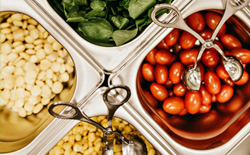
Serve local food in the school cafeteria
Food produced and served locally reduces the carbon footprint which comes from transportation. Sourcing locally also encourages local employment and contributes back to the local economy. For those who have an appetite for meat, from time to time, also look for alternative meat options, as meat production can account for one-fifth of greenhouse emissions.

Avoid plastic bottles and paper cups
Encourage students and staff to bring their own bottles for water and carry mugs for coffee/tea. This reduces unnecessary waste going to landfill.

Switch off the lights
Turn off the lights when the day light/ natural light is sufficient. Assign a class monitor for each class who will keep a check on turning off all the lights/monitors after everyone leaves the room and the lecture is over. Talk to administration about switching light bulbs to more energy efficient types, or bring in lamps with energy efficient bulbs instead of fluorescents.
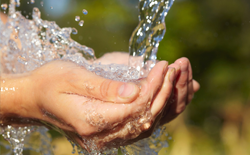
Use water efficiently
Water consumption rate per person in the UAE is 550 to 850 liters/day, which is considered one of the world’s highest rates. Installing water efficient fixtures (taps, water closets, urinals) can save potable water used for sewage conveyance by nearly 50%. Automatic water faucets with light sensors should be installed for wash basins for further savings.

Maintain the room temperature
Keep the class room temperature at a moderate setting while you are in the room. 24 degrees is considered an ideal temperature during summer months. Use your windows wisely! If your climate control system is on, shut them and if you need a little fresh air, turn off the AC. Bringing fresh plants into the classroom can also increase coolness in the room, thereby creating a healthy atmosphere for students to study.

Air Quality
Establishing good indoor air quality can positively affect student and teacher performance; can reduce absenteeism, and also prevent the potential for long and short-term health problems. Children spend 85% to 90% of their time indoors, and they breathe more air relative to their body size than adults. Hence they are more at risk with indoor pollutants and toxins.
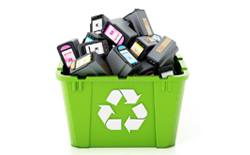
Recycle printer ink cartridges
Reduce the amount of ink used in printers and photocopiers (use a projector or interactive whiteboard). When ink cartridges are used, recycle the old ones so that they are not going to landfill.
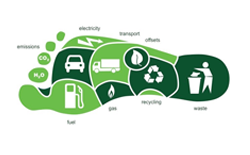
Measure the classroom’s Carbon Footprint with weekly meter readings/ electricity audits
student monitors should be appointed and trained to check the meter readings on a weekly basis. Only by monitoring consumption can the school understand its impact and work to further reduce its consumption. Getting the students involved in monitoring will provide hands on experience and understanding.

Incorporate Sustainability in the curriculum
Several key topics focusing on sustainability such as environment, globalization, green building practices, peaceful co-existence, food security, and energy can be included in the school curriculum, which will enhance the participatory learning and teaching methods which stimulate learners to bring about positive behavior change. UNESCO has provided a Training Guideline on incorporating Education for Sustainable Development (ESD) into the curriculum. Kindly click here to download the guidelines. Additionally, have class outside occasionally on nice days, giving yourself (and the environment) a break from overhead lights, computers, etc.
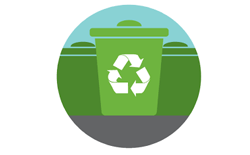
Audit for waste reduction
Appoint students to conduct audits of paper materials and trash in the classroom on a weekly basis. Encourage students to make posters focusing on decomposition facts, landfill facts, and instruction as to what goes where. Start an electronic device recycling program at your school, where students can bring in their old electronic devices to be recycled or donated, rather than becoming “e-waste”.

Form an Eco-Movie Club
Form an Eco Club comprising of students who will take charge of identifying documentaries with a focus on sustainability, which can be showcased on a monthly/bi-monthly basis. This can create a very strong impact, as the students can derive examples and schemes from the featured documentaries and put them into practicality in their day to day life, thereby reducing the carbon footprint. Some examples of the documentaries are: Trashed, the Future of food, The Age of Stupid, Living with ED, Who killed the Electric Car, 30 days, Dirt! The movie, etc!
Cradle to Cradle Certified™ is a globally recognized measure of safer, more sustainable products made for the circular economy.
Product designers, manufacturers and brands around the world rely on the Cradle to Cradle Certified Product Standard as a transformative pathway for designing and making products with a positive impact on people and planet. From fragrances to flooring, t-shirts and jeans to water bottles and window treatments, thousands of products are Cradle to Cradle Certified. What’s more, a growing number of brands, organizations and standards also recognize Cradle to Cradle Certified as a preferred product standard for responsible purchasing decisions.
Currently in its third iteration, the Cradle to Cradle Certified Product Standard is rooted in the Cradle to Cradle® design principles established by William McDonough and Dr. Michael Braungart. Standard requirements are developed through a stakeholder engagement process with input from technical experts, market leaders and the public. Version 4 of the Cradle to Cradle Certified Product Standard is currently in development and is anticipated to be completed at the end of 2020 or early 2021.
To receive certification, products are assessed for environmental and social performance across five critical sustainability categories: material health, material reuse, renewable energy and carbon management, water stewardship, and social fairness. A product is assigned an achievement level (Basic, Bronze, Silver, Gold, Platinum) for each category. A product’s lowest category achievement also represents its overall certification level. The standard encourages continuous improvement over time by awarding certification on the basis of ascending levels of achievement and requiring certification renewal every two years.
Find out how to certify a product.
Cradle to Cradle Certified™ Assessment Categories
Each certification level represents increasingly rigorous achievement across five critical performance categories: Material Health, Material Reutilization, Renewable Energy and Carbon Management, Water Stewardship, and Social Fairness.
We are Headquartered at Dubai, UAE. However we cater to UAE, Oman, Qatar, Saudi Arabia (KSA), Bahrain and other Middle-East / GCC Countries.
We partner with all the leading stakeholders in the field of EPD, HPD, LCA, Carbon Footprint, Green Building, LEED Certification Consultants, LEED Product Manufacturers for LEED Product Certification, LEED Clients, Verifiers, Individual Verifiers, Preparers & Program Operators.
This totally depends on which Certification you may want to go for. For example, EPD shall take 3 – 4 Months whereas HPD takes 1 – 2 Months depending on the Data availability from the Clients and their Suppliers. However our competent Team shall ensure that the deadlines are met.
Any Building and Construction Products and Material, accessories, adhesives, air purification products, Air quality monitors, appliances, Audio visual, beds & beddings, Carpets, Cladding, Aluminium Composite Panels, Glazed Glass, Float or Clear Glass, Building Controls, Ceilings, Interiors, Cleaning Items, Cleaning Chemical Products, Concrete Products, Curtain Walls, Doors, Fire Proofing, Counters, Wood Products, Minerals, Flooring, Sealants, Grouts, Gypsum boards, Hardware, Light fixtures & fittings, Bulbs, Tubes, LED, Lighting, Masonry, Steel Products, Metal finishes, Moisture Barriers, Paints, Coatings, Inks, Partitions, Walls, Piping, Plastic Finishes, Plumbing Accessories, Prefab, Modular, Fixtures, Racks, Enclosures, Renewable Energy related products, Roofing, Facade solutions, Seating, Sensors, Sheathing, Cables, Cable Trays, Skylights, Storage solutions, Tables, Textiles and Fiber / Fibre, Packaging, Home and Garden, Office Supplies, Stationery, Paper & Pulp Products, Food Packaging, Pigments, Building Decor, Thermal & Acoustic Insulations, Tiling, Veneer, Laminates, Wall Systems, Wall coverings, Water purification, Window attachments, Windows, Wire, Cable Management, Pressed Glass – Glass panels, Floor System, Fabricated steel reinforcing bar (rebar), Asphalt, Acrylic Resin panels, Polyester Resin panels, Fabricated Reinforcing Bar, Vinyl Tile, Moulding, Polycarbonate panels, Engineered Hardwood, Wall Art, Polymeric, Solid Hardwood, Acoustic Wall Panels, High Pressure Laminates, Ceramic Tile, Hard blocks, Concrete, Hardwood Flooring, Wallcoverings, Stikits, Seating, Chairs, Furniture, Table, Racks, Systems Furniture, Plastic Resins, Vinyl Plank and Tile, Building and Construction Products/Interior Moulding and Trim, MDF Mouldings, Rubber Flooring, Asphalt Plant, Luxury Vinyl Tile, Raised Access Flooring, Rubber Flooring, Flooring Adhesives, Casegoods, Wood and other Sustainable products and sustainability solutions.
It is not possible for one entity or a person to create EPD. Firstly, to develop an LCA model, the following main types of data will be needed:
I. Annual energy use (i.e. electricity and fuel use)
II. Annual water use
III. Annual waste generation and emissions generation
IV. Material composition and supplier location
V. Packaging
VI. Transportation distance representing distribution of the product
VII. Anticipated product lifetime and required maintenance
Results from the LCA modelling will be summarized in an LCA Report. The LCA Report will be critically reviewed for conformance to ISO 14044 by an independent LCA practitioner. Optional third-party review of the LCA report will allow the EPDs to contribute 1.5 products to LEED v4.1.
At EnviroLink, we support clients for LEED V4, LEED V4.1, Emirates Green Building Council (UAE), Estidama Pearl rating System (Abu Dhabi – UAE), Al Sa’fat (Dubai – UAE), Global Sustainability Assessment System (GSAS), BREEAM & other Green Building & Sustainability Standards
- LEED BD+C (New Construction, Core and Shell, Schools)
- LEED EBOM (Existing Buildings and Operations)
- LEED for Homes
- LEED ID+C (Interiors)
- Estidama Pearl Communities
- Estidama Pearl Buildings
- Estidama Pearl Villas
- GSAS (All Typologies, Sports, Rail, etc.)
- BREEAM International
- CEEQUAL
- DGNB
- WELL
- Green Building Certification Support
LEED (Leadership in Energy and Environmental Design) is the most widely used green building rating system in the world. Available for virtually all building types, LEED provides a framework for healthy, highly efficient, and cost-saving green buildings. LEED certification is a globally recognized symbol of sustainability achievement and leadership.
LEED is for all building types and all building phases including new construction, interior fit outs, operations and maintenance and core and shell. Unsure of which rating system to use? Check out our interactive Discover LEED tool to get started; then, use the rating system selection guidance to make a final decision.
Millions of people are living, working and learning in LEED-certified buildings around the world. Learn more about the value of LEED certification.
Alphabetical index of 12 ecolabels.
 | Audubon InternationalAudubon International’s environmental and sustainability education and certification programs require individuals responsible for the membership type to meet specific environmental or sustainability performance requirements. Standards currently exist for communities, neighborhoods, new land developments, land development renovations, schools, businesses, golf courses, and lodging facilities. |
 | C.A.F.E. PracticesCoffee and Farmer Equity (C.A.F.E.) Practices evaluates, recognizes and rewards producers of high-quality sustainably grown coffee for Starbucks stores. C.A.F.E. Practices is a green coffee sourcing guideline with third-party evaluation. C.A.F.E. Practices seeks to ensure that Starbucks sources sustainably grown and processed coffee by evaluating the economic, social and environmental aspects of … |
 | EarthCheckEarthCheck is a benchmarking certification and advisory group for travel and tourism. Since 1987, EarthCheck have helped businesses, communities and governments to deliver clean, safe, prosperous and healthy destinations for travellers to visit, live, work and play. EarthCheck’s approach has been to help operators break resource challenges into manageable actions that can be taken forward by management … |
 | Eco-SchoolsA programme for environmental management and certification, and sustainable development education, for schools. |
 | FairtradeFairtrade is an ethical trade system that puts people first. Fairtrade offers farmers and workers in developing countries a better deal, and the opportunity to improve their lives and invest in their future. Fairtrade gives consumers the opportunity to help reduce poverty and instigate change through everyday shopping. When a product carries the FAIRTRADE Certification Mark, it means the … |
GEO CertifiedGEO is a stakeholder-funded, not-for-profit organization, dedicated to helping the global golf community establish leadership in environmental enhancement and corporate responsibility. GEO Certified is an ecolabel for golf development and course / club management. | |
 | Green Globe CertificationThe Green Globe Standard facilitates responsible and sustainable environmental and social activity; and improved environmental and social outcomes for travel and tourism operations. The Green Globe Standard is a structured assessment of the sustainability performance of travel and tourism businesses and their supply chain partners. Businesses can monitor improvements and document achievements … |
 | GREENGUARDAcquired in 2011, GREENGUARD Certification is now provided by UL Environment, a divison of UL (Underwriters Laboratories). GREENGUARD Certification helps manufacturers create — and helps buyers identify — interior products and materials that have low chemical emissions into indoor air during product usage. All certified products must meet stringent emissions standards based on established chemical … |
 | Marine Stewardship CouncilThe MSC fisheries standard has 3 overarching principles that every fishery must prove that it meets: Principle 1: Sustainable fish stocks The fishing activity must be at a level which is sustainable for the fish population. Any certified fishery must operate so that fishing can continue indefinitely and is not overexploiting the resources. Principle 2: Minimising environmental impact Fishing … |
 | Programme for the Endorsement of Forest Certification (PEFC) schemesThe Programme for the Endorsement of Forest Certification (PEFC) is an international non-profit, non-governmental organization dedicated to promoting Sustainable Forest Management (SFM) through independent third-party certification. It works throughout the entire forest supply chain to promote good practice in the forest and to ensure that timber and non-timber forest products are produced with … |
 | SFC Member SealThe Sustainable Furnishings Council (SFC) Member Seal is a label representing those companies which have made a public and verifiable commitment to sustainability and to improvement. These companies are involved in the home furnishings industry. The Exemplary status is voluntary – all members make a public & verifiable commitment to sustainability, to transparency, and to continuous improvement. |
 | SustentaXSustentaX is a Brazilian ecolabel that assists consumers to identify sustainable products, materials, equipments and services. Products with the SustentaX Seal are evaluated for their quality and human safety. Manufacturers must prove their social, environmental and marketing responsibilities. The independent verification process for the SustentaX Seal is based on ISO 14024. |
The cradle
The cradle is defined as the earth. It is used as the start of the boundary for embodied carbon, carbon footprint and LCA assessments, i.e. the extraction of materials from the ground.
Cradle to cradle
‘Cradle to cradle’ goes beyond ‘cradle to grave’ and conforms more to the model of the circular economy. In a cradle to cradle model products would be designed in a way so that at the end of their initial life they can be readily reused, or recycled, and therefore avoid landfill altogether.
Cradle to gate
Cradle to gate is a boundary condition associated with embodied carbon, carbon footprint and LCA studies. A study to these boundaries considers all activities starting with the extraction of materials from the earth (the cradle), their transportation, refining, processing and fabrication activities until the material or product is ready to leave the factory gate.
Cradle to site
Cradle to site is a boundary condition associated with embodied carbon, carbon footprint and LCA studies. A study to these boundaries includes the cradle to gate results and the transportation of the material or product to its site of use.
Cradle to grave
Cradle to site is a boundary condition associated with embodied carbon, carbon footprint and LCA studies. A study to these boundaries includes the cradle to site results but also includes the GHG emissions associated with the in use of the material or product (maintenance) and the end of life (disposal, reuse, recycling).
